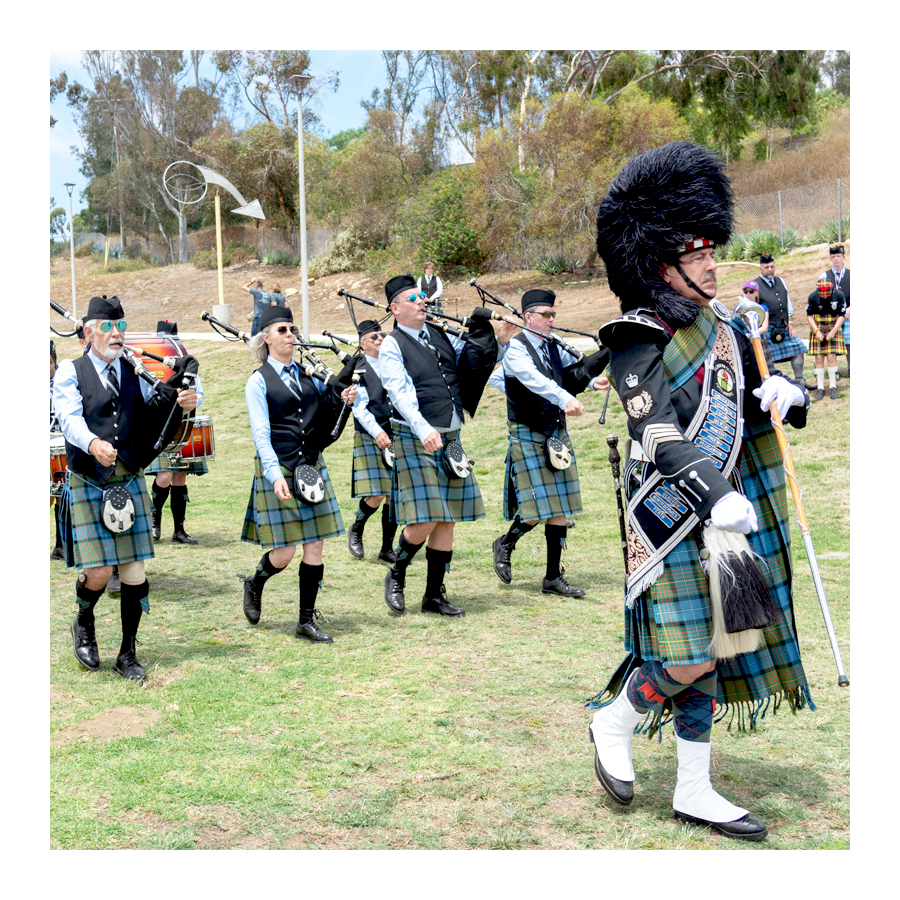Scotland’s national instrument, the Bagpipe or in Gaelic “piob-Mhor” (the great pipe) the instrument that has its origin in and has diffused from Scotland. The bagpipe is an instrument of great antiquity, an instrument which has its origin in the Middle East and traveled through and evolved in Europe. The “Oxford History of Music” makes mention of the first documented bagpipe being found on a Hittite slab at Eyuk, sculptured in 1000 BC. Biblical mention is made of the bagpipe in Genesis in the third chapter of Daniel, where the “Symphonia” in Nebuchadnezzar’s band has a bagpipe. Early pipes without reservoirs were the second musical instrument to evolve, made from natural bores such as hollow reeds, corn stalks, and bamboos. The Roman bagpipes (tibia utricularis) represented a major innovation in the reservoir. Numerous sources state that the Roman Emperor Nero played the pipes, with their image ever captured on coins.
There exist several types of bagpipes, each identical to its own culture. With its sizable airbag, the Great Highland Bagpipe, three trusty drones, tuneful chanter, and long mouthpiece (chosen pipe of Scotland). As a major part of Gaelic culture, the Great Highland Bagpipe falls into ceol mor (great or big music) and ceol beag (light music).
In spite of history, there is no refusing that Scots took a shine to bagpipes from the get-go, taking them into their culture, heritage and rituals, including battles. Scottish Chieftains and monarchs alike were said to hire a personal piper for all Scottish events. Even though the bond shared between Scotland and its bagpipes is unbreakable, some renowned deft piper and Gaelic historian Hugh Cheape insist that Highland pipes are modern investments invented purely for tradition. Cheape also challenges the claims that bagpipes served as instruments of war. Bagpipes in Scotland made their initial appearance in the Scottish military which led to the Great Highland bagpipe becoming fixture in the British Military.
Modern Scottish Highland Bagpipes
The Americans are familiar with the pipes, which are the Scottish Highland Bagpipes, which have three drones that come out the top of the bag to produce a constant sound, a single chanter with nine notes of the pipe scale are played one, and a bag made of sheep or elk skin that the piper presses with his arm when he wants to take a breath. This makes pipe music free from pauses. The Highland Pipes are one of the thirty different kinds of bagpipes that have appeared throughout the world, such as Spanish, French, Italians, Germans, Hungarians, Czechoslovakians, and Tunisians. Indians, Greeks, and a myriad of other cultures have developed their own bagpipes. These bagpipes can have any number of drones, up to eight coming out top, bottom, or side of the bag. Among the more famous bagpipes outside the British Isles are the Spanish Galicia, similar to the Scottish Bagpipe as far as the bag and air supply but has only one drone. The French Musette has keys on the chanter and a billow to keep the bag full, and the Zampongno from Italy has two chanters.

